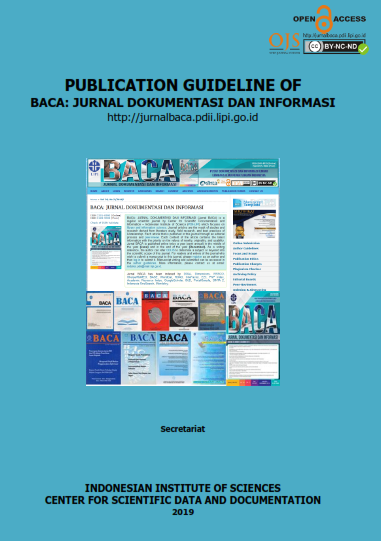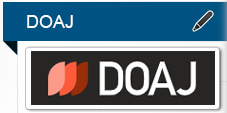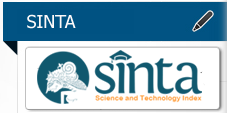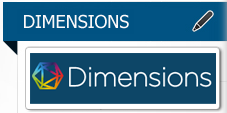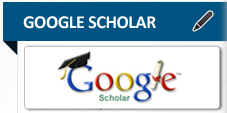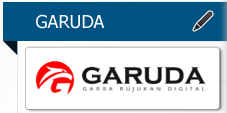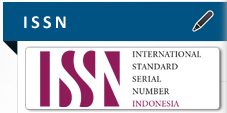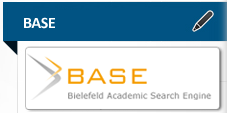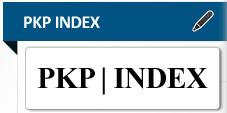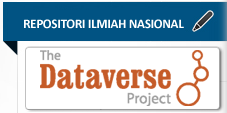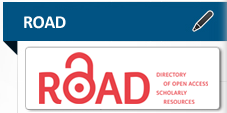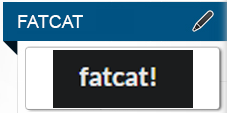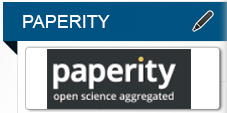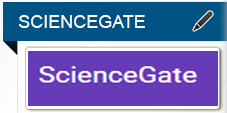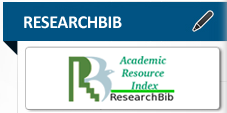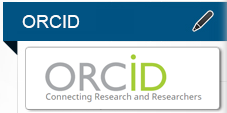PERAN PUBLIC INFORMATION OFFICERS DALAM KOMUNIKASI LAYANAN PERPUSTAKAAN DIGITAL MELALUI FACEBOOK
Abstract
This study aims to find out communication models on analog versus digital library services through Facebook; and the important role of PIO in digital library services. This study uses a qualitative descriptive method with literature studies. This study shows that there has been a shift in the model and role of library service communication from analog to digital. This can be seen from the role of PIO as: (1) digital library information content creators; (2) digital library promotional content creators; (3) communication managers and disseminator on information and promotions on social media (in the context of this article is Facebook); and (4) communication links between leaders and audiences. The recommendation of this study is that library managers must recognize the importance of a new communication model in library management through Facebook.
Keywords
Full Text:
PDFReferences
Anwar, R.K. & Rusmana, A. 2017. Komunikasi Digital Berbentuk Media Sosial dalam Meningkatkan Kompetensi bagi Kepala, Pustakawan, dan Tenaga Pengelola Perpustakaan. Jurnal Aplikasi untuk Masyarakat, Vol.6, No.3, 204-208.
Basuki, S. 2003. Digital Libraries in Indonesia with Special Emphasis to Academic Libraries. Jurnal Dokumentasi dan Informasi, 27(2), 9-17.
Bertot, J. C., Jaeger, P. T., & Grimes, J. M. 2010. Using ICTs to Create A Culture of Transparency: E-Government and Social Media as Openness and Anti-Corruption Tools for Societies. Government Information Quarterly, 27, 264-271.
Bonsón, E., Royo, S., & Ratkai, M. 2015. Citizens’ Engagement on Local Governments’ Facebook Sites. An Empirical Analysis: The Impact of Different Media and Content Types in Western Europe. Government Information Quarterly, 32(1), 52–62. https://doi.org/10.1016/j.giq.2014.11.001.
Carpenter, S., & Lertpratchya, A. P. 2016. A Qualitative and Quantitative Study of Social Media Communicators: An Extension of Role Theory to Digital Media Workers. Journal of Broadcasting and Electronic Media, 60(3), 448–464. https://doi.org/10.1080/08838151.2016.1203317.
Davenport, S., Bergman, S., Bergman, J., & Fearrington, M. 2014. Twitter Versus Facebook: Exploring the Role of Narcissism in The Motives and Usage of Different Social Media Platforms. Computers in Human Behavior, 32, 212-220. http://dx.doi.org/10.1016/j.chb.2013.12.011.
Detik.com. 2018. Berapa Jumlah Pengguna Facebook Sekarang? Di https://inet.detik.com/cyberlife/d-3844923/berapa-jumlah-pengguna-facebook-sekarang (akses 25 Oktober 2018).
Efimova, L., & Grudin, J. 2008. Crossing Boundaries: Digital Literacy in Enterprises. In Digital literacies: Concepts, Policies, Practices (203–227). New York: Peter Lang.
Graham, M.W. 2014. Government Communication in The Digital Age: Social Media’s Effect on Local Government Public Relations. Public Relations Inquiry, Vol. 3(3), 361-376.
Hasibuan, Z. A. 2007. Metodologi Penelitian pada Bidang Ilmu Komputer dan Teknologi Informasi: Konsep, Teknik, dan Aplikasi. Jakarta: Universitas Indonesia.
Irwansyah. 2018. Moda Komunikasi di Era Pascamanusia. Di http://m.mediaindonesia.com/read/detail/171259-moda-komunikasi-di-era-pascamanusia (akses 18 Oktober 2018).
Java, A., Song, X., Finin, T., & Tseng, B. 2007. Why We Twitter: Understanding Microblogging Usage and Communities. In Proceedings of the 9th WebKDD and 1st SNA-KDD 2007 Workshop on Web Mining and Social Network Analysis, San Jose, CA. http://dx.doi.org/10.1145/1348549.1348556.
Kaplan, A., & Haenlein, M. 2010. Users of the world, Unite! The Challenges and Opportunities of Social Media. Business Horizons, 53(1), 59-68. http://dx.doi.org/10.1016/j.bushor.2009.09.003.
Kingsley C. 2010. Making the Most of Social Media: 7 Lessons from Successful Cities. Philadelphia, PA: Fels Institute of Government, University of Pennsylvania.
Linton, R. 1936. The Study of Man. New York, NY: D. Appleton-Century Company.
Lotan, G., Graeff, E., Ananny, M., Gaffney, D., Pearce, I., & Boyd, D. 2011. The Arab Spring the Revolutions Were Tweeted: Information Flows During the 2011 Tunisian and Egyptian Revolutions. International Journal of Communication, 5, 1375–1405.
Lovejoy, K., & Saxton, G.D. 2012. Information, Community, and Action: How Nonprofit Organizations Use Social Media. Journal of Computer-Mediated Communication, 17, 337–353. doi:10.1111/j.1083-6101.2012.01576.x.
Manga, E., Sumule, G.M., & Jaya, A. 2017. Pola Komunikasi Pustakawan dalam Meningkatkan Pelayanan. Jurnal Ilmu Komunikasi dan Informasi, Vol.2, No.3.
Nashihuddin, W. 2016. Promosi Layanan Perpustakaan Khusus melalui Media Sosial dan Kegiatan Sosialisasi: Tinjauan Kegiatan Promosi di PDII-LIPI. Conference Paper. Di https://www.researchgate.net/publication/313312786 (akses 25 Oktober 2018).
Picazo-Vela, S., Fernandez-Haddad, M., & Luna-Reyes, L. F. 2016. Opening The Black Box: Developing Strategies to Use Social Media in Government. Government Information Quarterly, 33(4), 693–704. https://doi.org/10.1016/j.giq.2016.08.004.
Qvortrup, L. 2006. Understanding New Digital Media. European Journal of Communication, 21(3), 345–356. https://doi.org/10.1177/0267323106066639.
Raine, L. 2011. Social Media and Civic Life. Diperoleh 25 Maret 2013 dari http://www.pewInternet.org/Presentations/2011/Oct/NASCIO.aspx.
Rohanda. 2013. Landasan Ilmiah Ilmu Informasi Perpustakaan dalam Perspektif Ilmu Komunikasi. Jurnal Kajian Informasi & Perpustakaan, Vol.1, No.1, Juni, 9-20.
Smith, A. 2011. Why Americans Use Social Media. Di http://www.pewInternet.org/ Reports/2011/Why-Americans-Use-Social-Media.aspx (akses 25 Oktober 2018).
Soekanto, S. 2009. Sosiologi Suatu Pengantar, Edisi Baru. Jakarta: Rajawali Pers.
Sugiyono. 2005. Metode Penelitian Administrasi. Bandung: Alfabeta.
Wahono, R. S. 1998. Digital Library: Challenges and Roles Toward 21st Century. In Science Meeting, Indonesian Student for Science and Technology in Japan.
Watzlawick, P., Beavin, J.H., & Jackson, D. D. 1967. Pragmatics of Human Communication: A Study of Interactional Patterns, Pathologies, and Paradoxes, 48-54. New York: Norton.
Whitney, F. 1960. The Element of Research. New York: Prentice-Hall, Inc.
Wikipedia. 2018. Facebook. Di https://id.wikipedia.org/wiki/Facebook (akses 25 Oktober 2018).
Wright, D. K., & Hinson, M. D. 2013. An Updated Examination of Social and Emerging Media Use in Public Relations Practice: A Longitudinal Analysis Between 2006 and 2013. Public Relations Journal, 7, 1-39.
Yadav, M., Joshi, Y., & Rahman, Z. 2015. Mobile Social Media: The New Hybrid Element of Digital Marketing Communications. Procedia - Social and Behavior Sciences 189, 335-343.
Yulianti, L. 2010. Penerapan Teknologi Informasi dan Komunikasi Perpustakaan bagi Mahasiswa melalui E-Library. Jurnal Media Infotama, Vol.5, No.1.
DOI: https://doi.org/10.14203/j.baca.v40i1.437
Copyright (c) 2019 BACA: JURNAL DOKUMENTASI DAN INFORMASI

This work is licensed under a Creative Commons Attribution-NonCommercial-NoDerivatives 4.0 International License.











